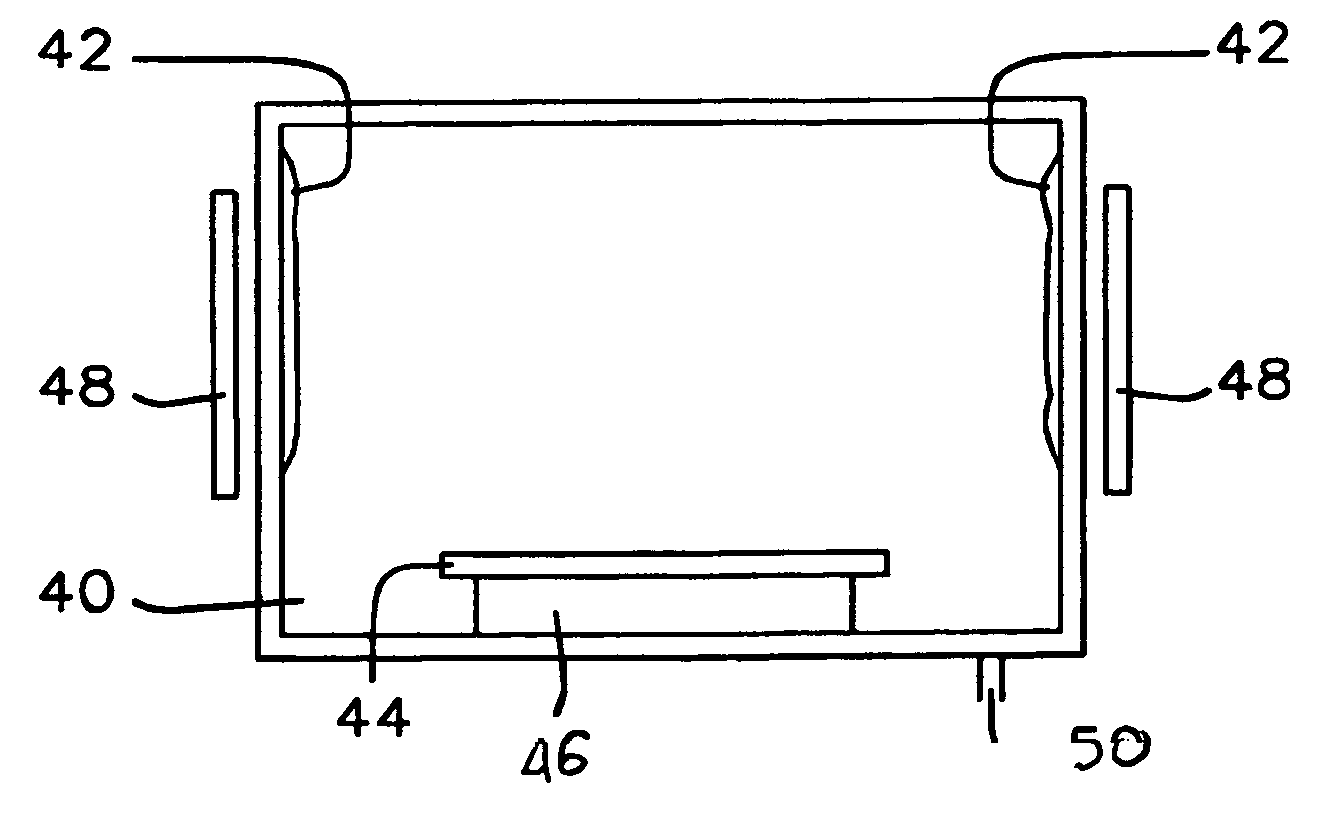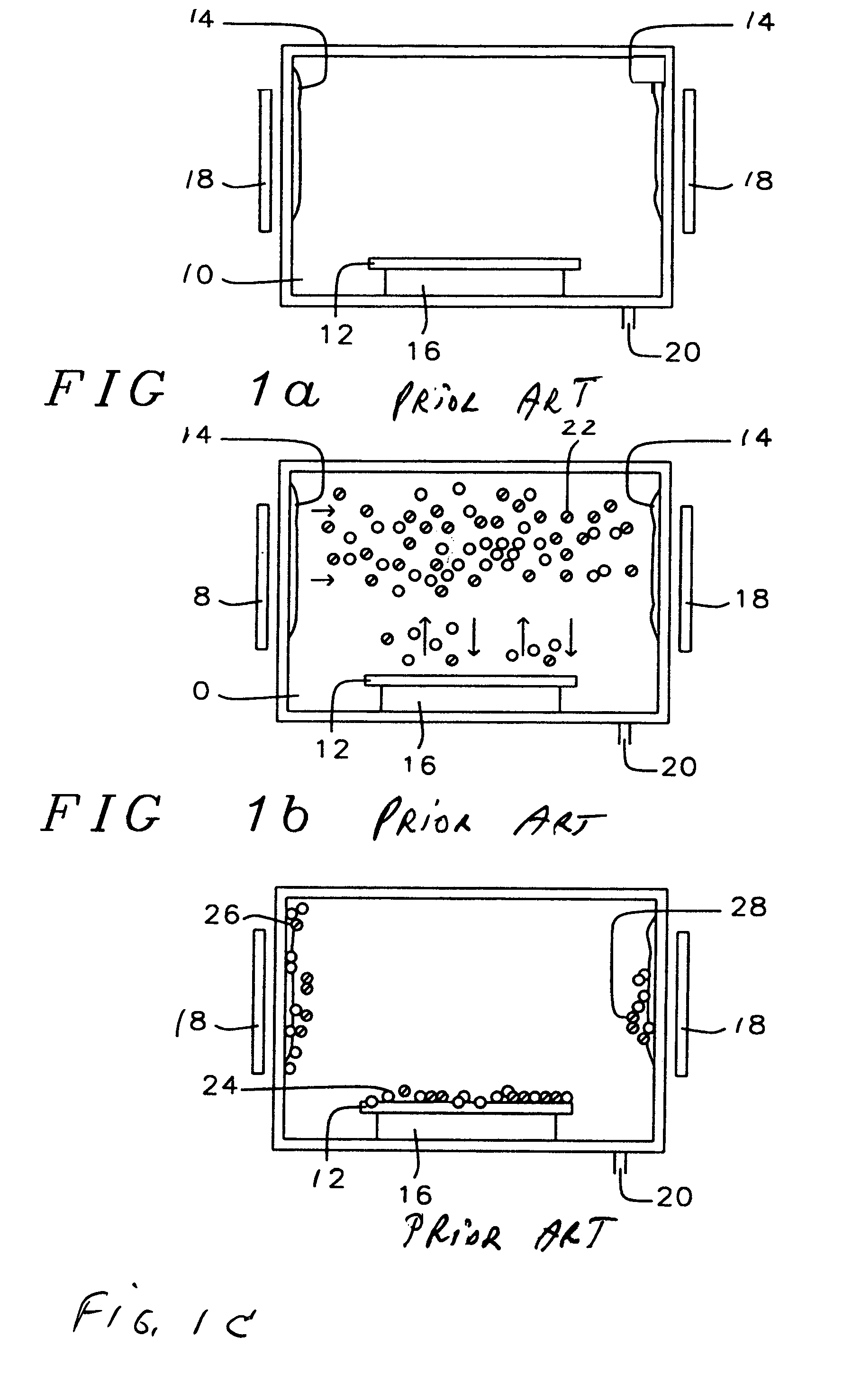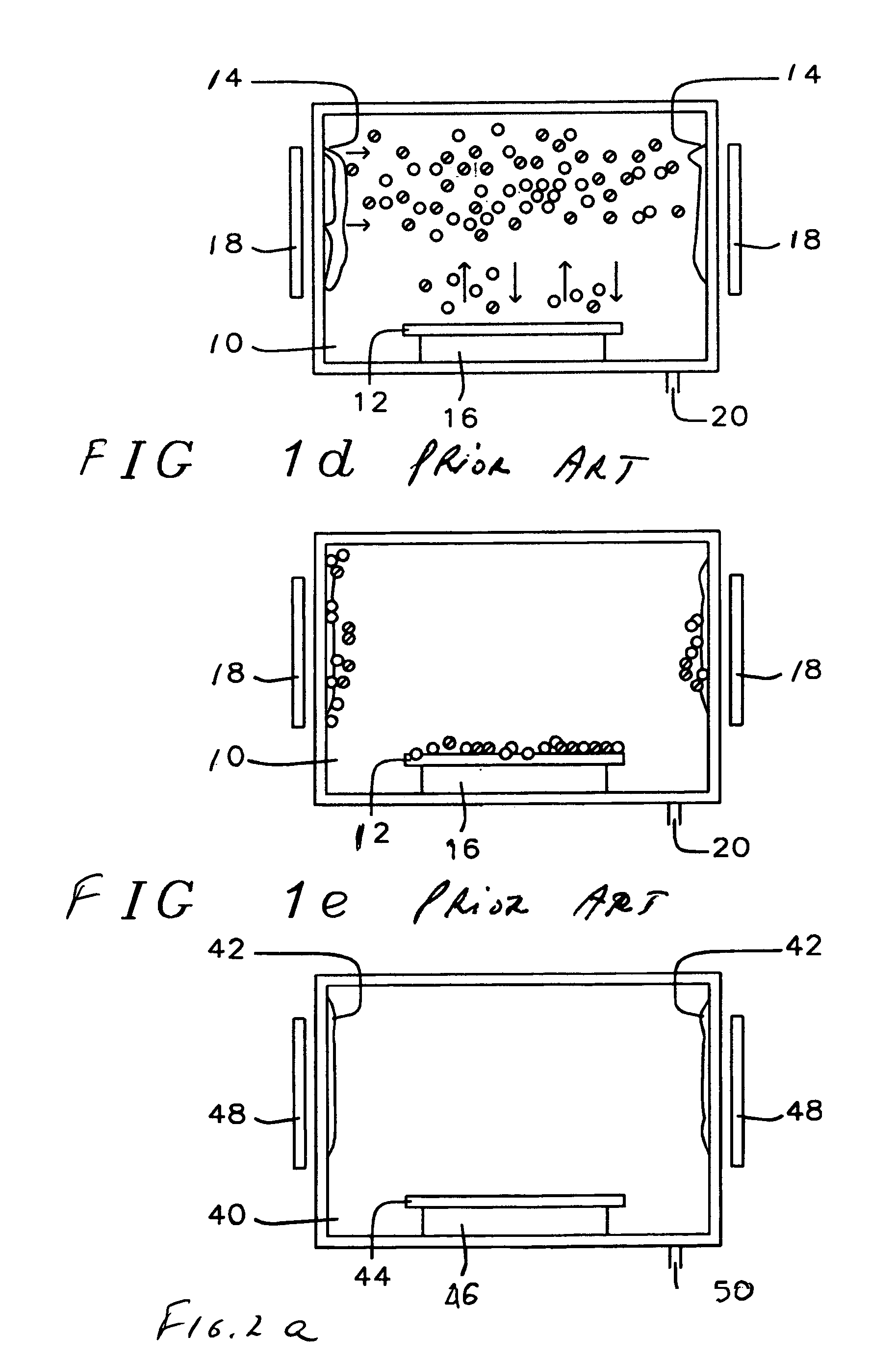Method to reduce particle level for dry-etch
a dry-etching and particle technology, applied in the field of semiconductor device manufacturing, can solve the problems of reducing intensity, erroneous end-point signals, and accumulating residues on the surface inside the plasma treatment chamber, so as to prolong the lifetime of inductively coupled plasma, reduce applied power, and reduce particle count
- Summary
- Abstract
- Description
- Claims
- Application Information
AI Technical Summary
Benefits of technology
Problems solved by technology
Method used
Image
Examples
Embodiment Construction
[0043]Referring now specifically to FIG. 2, there is shown the cleaning process of the invention as applied to a (photolithography) mask. FIG. 2a shows the dry-clean chamber 40, a wall polymer or other residual reaction product 42 and the mask 44 that is positioned on a table 46. A rf coil 48 is provided around and on the outside of the chamber 40, the rf coil provides the electrical energy to the polymer 42. The polymer, as a consequence of the energy provided by the ICP coil 48, evaporates inside the dry-etch chamber 40. Excess of wall polymer or other residual reaction product is removed via the suction pump 50.
[0044]FIG. 2b shows the wall polymer or other residual reaction product molecules 52 being distributed throughout the chamber after the rf coil ICP 48 has been activated and the RIE etch has been started.
[0045]FIG. 2b represents the first step of the power-down sequence of the dry-etch process. This first step is out of a total of six dry-etch power-down steps within the s...
PUM
| Property | Measurement | Unit |
|---|---|---|
| rf power | aaaaa | aaaaa |
| rf power | aaaaa | aaaaa |
| rf power | aaaaa | aaaaa |
Abstract
Description
Claims
Application Information
 Login to View More
Login to View More - R&D
- Intellectual Property
- Life Sciences
- Materials
- Tech Scout
- Unparalleled Data Quality
- Higher Quality Content
- 60% Fewer Hallucinations
Browse by: Latest US Patents, China's latest patents, Technical Efficacy Thesaurus, Application Domain, Technology Topic, Popular Technical Reports.
© 2025 PatSnap. All rights reserved.Legal|Privacy policy|Modern Slavery Act Transparency Statement|Sitemap|About US| Contact US: help@patsnap.com



